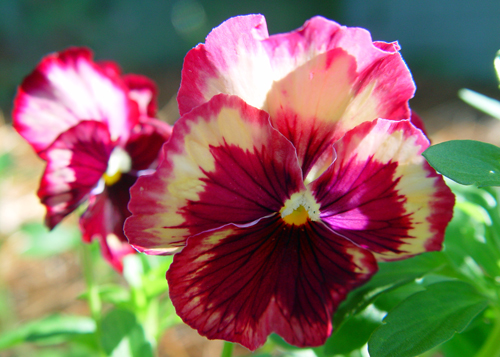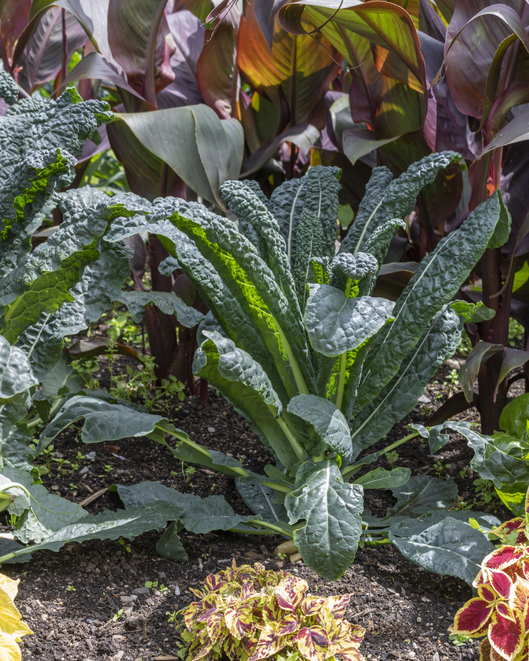Vegetables don’t have to just grow in gardens. Many can be part of your landscape, offering both color and aesthetic value and providing food.
Cabbage, Swiss chard and peppers add color and taste
Some vegetables are actually sold as ornamentals. For example, ornamental cabbages have interesting colors of purple, green or white with different textured leaves. They are often planted in masses for their striking appearance.
Swiss chard would also look great in your landscape. The stems or petioles come in a variety of bright colors including red, yellow and orange. They can provide accent color just about anywhere.
Ornamental peppers are another vibrant choice. They range in color from red and yellow to purple, green and orange. Usually the smaller fruited types are best because they produce a good amount of fruit on a single plant. Watch out though; most of these peppers are hot.
Some beans are colorful, but shouldn't be eaten raw
Both beans and peas can be planted in landscapes. The vining types with bright flowers in purple, blue, pink and white work well. The pods can also be quite ornamental. Pod colors vary from green to purple to speckled and almost black.
When it comes to beans, know the source of your plants. Some varieties are poisonous, and all beans should not be eaten raw because they can make you sick.
If you have the space, many squash varieties produce fruit with unusual shapes and colors. The plants may not look very pretty in the landscape, but the fruit are great for decorating both indoors and out. Plus, some squash varieties don’t spoil quickly and can last for many months.
Some floweres are tasty, too
Vegetables are not the only tasty things that can grow in landscapes. Edible flowers like pansies and nasturtium are other options. Pansies are commonly used in winter landscapes to add color. Nasturtiums are a vining plant with bright flowers. Its leaves and blossoms have a peppery taste, and the plants are particularly easy to grow.
Even some vegetables you wouldn’t think of as landscape plants can add interest. Tomatoes were originally grown as an ornamental because many believed that its fruit was poisonous.
Eggplants are easy to grow, and its fruit comes in a variety of colors and shapes beyond the traditional purple usually seen in grocery stores. Eggplants can be green or stripped, round or oblong. They even come in white, which is where their name originated. The original small, white fruit actually looked like an egg.
From fiery peppers to edible flowers, there are many ways to use vegetables in home landscapes. You just have to do is think outside the box.









